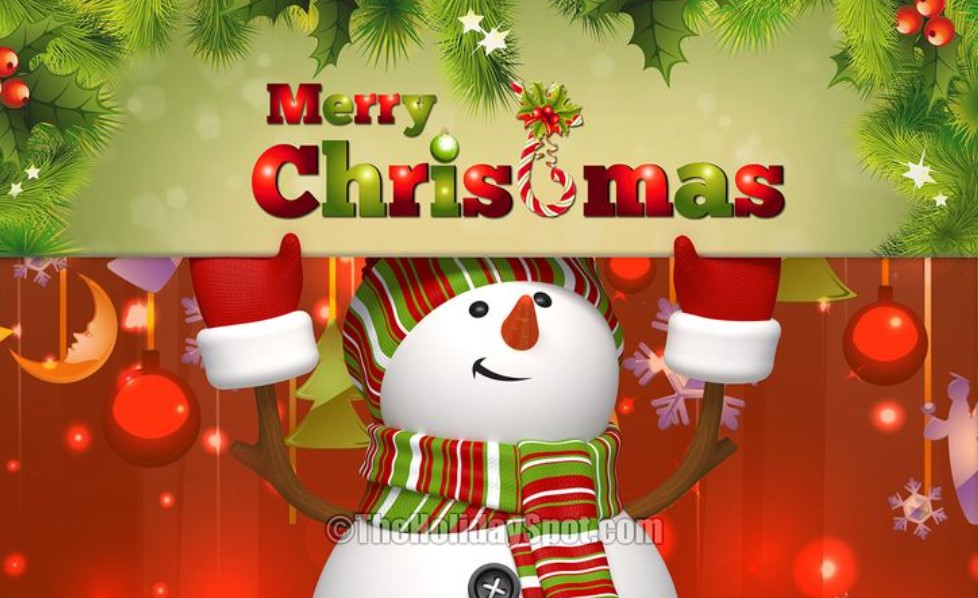The History and Meaning Behind Christmas Symbols
The History and Meaning Behind Christmas Symbols

Christmas is a holiday rich in traditions, and many of the symbols we associate with the season have deep historical and religious significance. From the Christmas tree to the star atop the tree, these symbols are more than just decorations—they carry powerful meanings and stories that have been passed down through generations. Let’s explore the history and meaning behind some of the most beloved Christmas symbols.
1. The Christmas Tree: A Symbol of Life and Rebirth
The Christmas tree is one of the most recognized symbols of the holiday season. Its roots trace back to ancient pagan customs, where evergreen trees were celebrated as a symbol of life and rebirth during the winter solstice. Early Christians later adopted the practice, with the tree symbolizing eternal life through Christ. The tradition of decorating the tree began in 16th-century Germany, where people would adorn their trees with candles, apples, and other ornaments. Today, the Christmas tree represents hope and the renewal of life, even in the darkest months of winter.
2. The Star: A Sign of Guidance and the Birth of Jesus
The star is another important symbol during Christmas, most commonly seen at the top of the Christmas tree. This symbol represents the Star of Bethlehem, which guided the Wise Men to the birthplace of Jesus. According to the Bible, the star was a sign of the Savior’s birth and a source of divine guidance. It’s often depicted as a bright, shining star that offers light in a dark world, symbolizing Christ as the “light of the world.” The star is a reminder of the miraculous nature of Christ’s birth and the hope He brings to humanity.
3. The Christmas Wreath: A Circle of Everlasting Love
The Christmas wreath, typically made from evergreen branches, is another symbol rich in meaning. The circular shape of the wreath represents eternity, with no beginning and no end, signifying God’s eternal love. The evergreen branches are symbolic of eternal life, as they remain green throughout the winter. Wreaths were originally hung to welcome guests into homes and symbolize the presence of Christ. Over time, they’ve become a staple of Christmas décor, often adorned with red ribbons, holly, and candles, each element adding additional layers of meaning.
4. The Candy Cane: A Representation of Jesus’ Sacrifice
The candy cane is a popular Christmas treat, but it also holds significant symbolism. Shaped like a shepherd’s crook, the candy cane represents Jesus, the Good Shepherd, who cares for His flock. The white color of the candy symbolizes purity, while the red stripes represent the blood Jesus shed during His crucifixion. The story behind the candy cane’s creation is tied to a 17th-century German choirmaster who crafted the cane to help children remember the Christmas story. Today, it’s a sweet reminder of Christ’s love and sacrifice.
5. Santa Claus: The Spirit of Giving and Generosity
Santa Claus, or Saint Nicholas, is one of the most beloved symbols of Christmas. His origins lie in the story of Saint Nicholas, a 4th-century bishop known for his generosity and love for children. He was famous for secretly giving gifts to those in need, and his legacy has evolved into the jolly figure we recognize today. Santa Claus embodies the spirit of giving, kindness, and joy during the holiday season. His association with gift-giving highlights the importance of sharing love and blessings with others, making Christmas a time of generosity and goodwill.
6. The Nativity Scene: A Reminder of Christ’s Birth
The nativity scene, or crèche, is one of the most meaningful symbols of Christmas. It depicts the birth of Jesus in a humble stable in Bethlehem, surrounded by Mary, Joseph, angels, shepherds, and the Wise Men. The nativity scene serves as a reminder of the true reason for the season—the birth of Christ. This symbol has its origins in Italy in the 13th century when St. Francis of Assisi created the first living nativity scene. Today, nativity scenes are found in homes and churches around the world, reminding us of the humble beginnings of the Savior and the joy His birth brings.
7. Holly and Ivy: Symbols of Protection and Eternal Life
Holly and ivy are traditional Christmas decorations, each carrying its own symbolism. Holly, with its sharp leaves and bright red berries, is believed to offer protection and ward off evil spirits, especially during the winter months. In Christian tradition, holly represents the crown of thorns worn by Jesus during His crucifixion, with the red berries symbolizing His blood. Ivy, which is an evergreen plant, symbolizes fidelity and eternal life. Together, holly and ivy serve as reminders of both Christ’s suffering and the promise of everlasting life.
8. The Bell: A Call to Peace and Joy
Bells are often used in Christmas celebrations, both as decorations and in church services. The sound of bells represents joy, peace, and the announcement of good news. In Christian tradition, bells were rung to announce the birth of Christ, and the tradition continues today in churches and homes. The ringing of bells is a call to celebrate the joyous occasion of Christmas and the peace that Jesus brings to the world.

9. The Poinsettia: A Symbol of Hope and the Christmas Spirit
The poinsettia, with its vibrant red and green leaves, is a popular Christmas flower. According to Mexican legend, a poor girl could only offer weeds to the Christ child, which miraculously bloomed into the beautiful red flowers we now call poinsettias. The poinsettia is a symbol of hope, joy, and the Christmas spirit. Its vibrant red color represents the blood of Christ, while its star-like shape reminds us of the Star of Bethlehem. The poinsettia is a symbol of love and the spirit of giving, making it a perfect addition to any holiday celebration.
10. The Angel: A Herald of Good News
The angel is a central figure in the Christmas story, appearing to shepherds to announce the birth of Jesus. Angels symbolize God’s messengers and are often depicted as beautiful, heavenly beings who bring good news and proclaim peace on Earth. The presence of angels in Christmas celebrations represents the divine intervention in human history, reminding us of the heavenly joy that came with the birth of Christ. Angels are also seen as symbols of protection, guiding and watching over us, especially during the holiday season.
Conclusion
The symbols associated with Christmas are more than just festive decorations—they carry deep meanings and stories that connect us to the history and tradition of the holiday. From the Christmas tree to the star, from the nativity scene to Santa Claus, these symbols remind us of the love, hope, and joy that Christmas brings. Whether we are decorating our homes, exchanging gifts, or gathering around the table, these symbols help us focus on the true meaning of the season and create a magical atmosphere of celebration.









